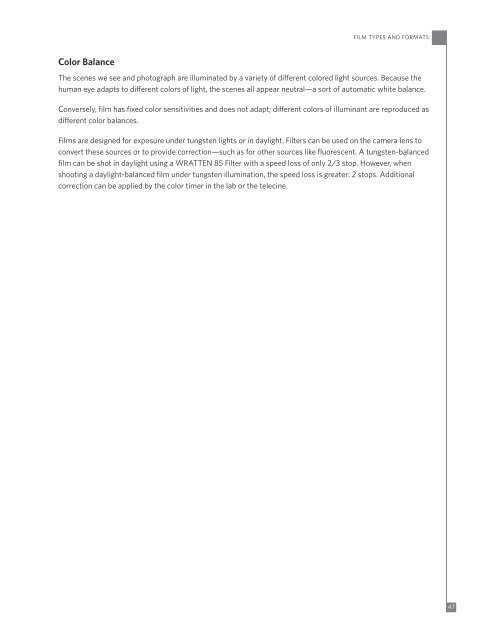Create successful ePaper yourself
Turn your PDF publications into a flip-book with our unique Google optimized e-Paper software.
Color Balance<br />
<strong>FILM</strong> <strong>TYPES</strong> <strong>AND</strong> <strong>FORMATS</strong><br />
The scenes we see and photograph are illuminated by a variety of dierent colored light sources. Because the<br />
human eye adapts to dierent colors of light, the scenes all appear neutral—a sort of automatic white balance.<br />
Conversely, film has fixed color sensitivities and does not adapt; dierent colors of illuminant are reproduced as<br />
dierent color balances.<br />
Films are designed for exposure under tungsten lights or in daylight. Filters can be used on the camera lens to<br />
convert these sources or to provide correction—such as for other sources like fluorescent. A tungsten-balanced<br />
film can be shot in daylight using a WRATTEN 85 Filter with a speed loss of only 2/3 stop. However, when<br />
shooting a daylight-balanced film under tungsten illumination, the speed loss is greater: 2 stops. Additional<br />
correction can be applied by the color timer in the lab or the telecine.<br />
47

















